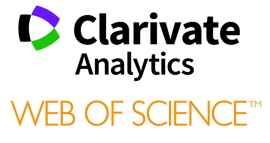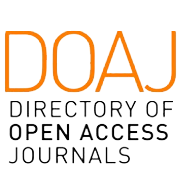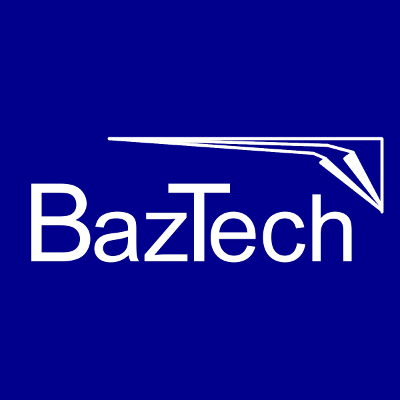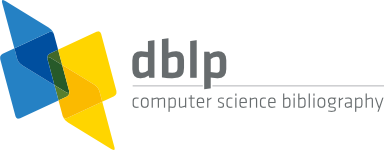| 2025 | |
| [1] | , "Challenges of Requirements Communication and Digital Assets Verification in Infrastructure Projects", In e-Informatica Software Engineering Journal, vol. 19, no. 1, pp. 250107, 2025.
DOI: 10.37190/e-Inf250107. Download article (PDF)Get article BibTeX file |
Authors
Waleed Abdeen, Krzysztof Wnuk, Michael Unterkalmsteiner, Alexandros Chirtoglou
Abstract
Background: Poor communication of requirements between clients and suppliers contributes to project overruns,in both software and infrastructure projects. Existing literature offers limited insights into the communication challenges at this interface. Aim: Our research aim to explore the processes and associated challenges with requirements activities that include client-supplier interaction and communication. Method: we study requirements validation, communication, and digital asset verification processes through two case studies in the road and railway sectors, involving interviews with ten experts across three companies. Results: We identify 13 challenges, along with their causes and consequences, and suggest solution areas from existing literature. Conclusion: Interestingly, the challenges in infrastructure projects mirror those found in software engineering, highlighting a need for further research to validate potential solutions.
Keywords
infrastructure, requirements, digital assets, verification, validation
References
1. H. Hofmann and F. Lehner, “Requirements engineering as a successfactor in software projects,” IEEE Software, Vol. 18, No. 4, Jul. 2001,pp. 58–66.
2. E. Bjarnason, K. Wnuk, and B. Regnell, “Requirements are slippingthrough the gaps—a case study on causes & effects of communicationgaps in large-scale software development,” in 2011 IEEE 19th internationalrequirements engineering conference. IEEE, 2011, pp. 37–46.
3. O. Liskin, “Howartifacts support and impede requirements communication,” in RequirementsEngineering: Foundation for Software Quality: 21st International WorkingConference, REFSQ 2015, Essen, Germany, March 23-26, 2015. Proceedings21. Springer, 2015, pp. 132–147.
4. P. Brereton, “The softwarecustomer/supplier relationship,” Commun. ACM, Vol. 47, No. 2, Feb. 2004,p. 77–81. [Online]. https://doi.org/10.1145/966389.966394
5. C. Ebert, “Optimizing supplier management in global softwareengineering,” in International Conference on Global Software Engineering(ICGSE 2007), 2007, pp. 177–185.
6. T. Vullinghs, T. Gantner, S. Steinhauer, and T. Weber, “Experienceson lean techniques to manage software suppliers,” in Product Focused SoftwareProcess Improvement: Second International Conference, PROFES 2000,Oulu, Finland, June 20-22, 2000. Proceedings 2. Springer, 2000, pp. 244–256.
7. Y. Zheng, S. Liu, W. Huang, and J.J.Y. Jiang, “Inter-organizationalcooperation in automotive new product development projects,” IndustrialManagement & Data Systems, Vol. 120, No. 1, 2020, pp. 79–97.
8. J.J. Jiang, G. Klein, J.C.A. Tsai, and Y. Li, “Managingmultiple-supplier project teams in new software development,” InternationalJournal of Project Management, Vol. 36, No. 7, 2018, pp. 925–939. [Online].https://www.sciencedirect.com/science/article/pii/S026378631830125X
9. J.S. Aurangzeab Butt, Marja Naaranoja, “Project change stakeholdercommunication,” International Journal of Project Management, Vol. 34,No. 8, 2016, pp. 1579–1595.
10. G. Wu, C. Liu, X. Zhao, and J. Zuo, “Investigating the relationshipbetween communication-conflict interaction and project success amongconstruction project teams,” International Journal of Project Management,Vol. 35, No. 8, 2017, pp. 1466–1482.
11. Y.F. Badir, B. Büchel, and C.L. Tucci, “A conceptual framework of theimpact of npd project team and leader empowerment on communicationand performance: An alliance case context,” International Journal of ProjectManagement, Vol. 30, No. 8, 2012, pp. 914–926.
12. H.Ç. Demirel, W. Leendertse, L. Volker, and M. Hertogh, “Flexibilityin ppp contracts–dealing with potential change in the pre-contract phase ofa construction project,” Construction management and economics, Vol. 35,No. 4, 2017, pp. 196–206.
13. A.D. Songer and K.R. Molenaar, “Project characteristics for successfulpublic-sector design-build,” Journal of construction engineering andmanagement, Vol. 123, No. 1, 1997, pp. 34–40.
14. C.W. Ibbs, Y.H. Kwak, T. Ng, and A.M. Odabasi, “Project deliverysystems and project change: Quantitative analysis,” Journal of constructionengineering and management, Vol. 129, No. 4, 2003, pp. 382–387.
15. E. Kania, E. Radziszewska-Zielina, and G. Śladowski, “Communicationand information flow in polish construction projects,” Sustainability, Vol. 12,No. 21, 2020, p. 9182.
16. Z.Y. Zhao, Q.L. Lv, J. Zuo, and G. Zillante, “Prediction system forchange management in construction project,” Journal of ConstructionEngineering and Management, Vol. 136, No. 6, 2010, pp. 659–669.
17. S. Malik, M. Taqi, J.M. Martins, M.N. Mata, J.M. Pereira et al.,“Exploring the relationship between communication and success ofconstruction projects: The mediating role of conflict,” Sustainability, Vol. 13,No. 8, 2021, p. 4513.
18. S.D. Vermillion and R.J. Malak, “An investigation on requirement andobjective allocation strategies using a principal–agent model,” SystemsEngineering, Vol. 23, No. 1, 2020, pp. 100–117.
19. R. Makkinga, R.d. Graaf, and H. Voordijk, “Successful verification ofsubcontracted work in the construction industry,” Systems Engineering,Vol. 21, No. 2, 2018, pp. 131–140.
20. A.M. Madni and M. Sievers, “Systems integration: Key perspectives,experiences, and challenges,” Systems Engineering, Vol. 17, No. 1, 2014,pp. 37–51.
21. J. Xu, H. Smyth, and V. Zerjav, “Towards the dynamics of trust inthe relationship between project-based firms and suppliers,” InternationalJournal of Project Management, Vol. 39, No. 1, 2021, pp. 32–44.
22. L.S. Henderson, “Encoding and decoding communication competencies inproject management – an exploratory study,” International Journal of ProjectManagement, Vol. 22, No. 6, 2004, pp. 469–476.
23. M. Loosemore and H. Muslmani, “Construction project management inthe persian gulf: inter-cultural communication,” International Journal ofProject Management, Vol. 17, No. 2, 1999, pp. 95–100.
24. C. Semeraro, M. Lezoche, H. Panetto, and M. Dassisti, “Digital twinparadigm: A systematic literature review,” Computers in Industry, Vol. 130,2021, p. 103469.
25. A. Toygar, “A new asset type: Digital assets,” Journal of InternationalTechnology and Information Management, Vol. 22, No. 4, 2013, p. 9.
26. P.E.D. Love, J. Zhou, J. Matthews, and H. Luo, “Systems informationmodelling: Enabling digital asset management,” Advances in EngineeringSoftware, Vol. 102, 2016, pp. 155–165.
27. A.R. Hevner, S.T. March, J. Park, and S. Ram, “Design science ininformation systems research,” MIS quarterly, 2004, pp. 75–105.
28. R.J. Wieringa, Design science methodology for information systems andsoftware engineering. Springer, 2014.
29. E. Bjarnason, B. Gislason Bern, and L. Svedberg, “Inter-teamcommunication in large-scale co-located software engineering: a case study,”Empirical Software Engineering, Vol. 27, No. 2, 2022, p. 36.
30. G. Liebel, M. Tichy, E. Knauss, O. Ljungkrantz, and G. Stieglbauer,“Organisation and communication problems in automotive requirementsengineering,” Requirements Engineering, Vol. 23, 2018, pp. 145–167.
31. J. Iqbal, R. Ahmad, M.H.N.B.M. Nasir, and M.A. Noor, “A frameworkto address communication issues during requirements engineering process forsoftware development outsourcing,” Journal of Internet Technology, Vol. 19,No. 3, 2018, pp. 845–859.
32. S. Fricker, T. Gorschek, C. Byman, and A. Schmidle, “Handshaking:negotiate to provoke the right understanding of requirements,” IEEESoftware, Vol. 99, 2009.
33. J. Pernstål, T. Gorschek, R. Feldt, and D. Florén, “Requirementscommunication and balancing in large-scale software-intensive productdevelopment,” Information and Software Technology, Vol. 67, 2015,pp. 44–64.
34. S. Maalem and N. Zarour, “Challenge of validation in requirementsengineering,” Journal of Innovation in Digital Ecosystems, Vol. 3, No. 1,2016, pp. 15–21.
35. T.F. Lynghaug, S. Kokkula, and G. Muller, “Investigating systemsengineering approaches in the norwegian construction industry: Amulti-case study,” INCOSE International Symposium, Vol. 32, No. 1, 2022,pp. 792–808.
36. R. de Graaf, R. Pater, and H. Voordijk, “Level of sub-contractingdesign responsibilities in design and construct civil engineering bridgeprojects,” Frontiers in Engineering and Built Environment, Vol. 3, No. 3,2023, pp. 192–205, publisher: Emerald Publishing Limited.
37. M. Raatikainen, T. Männistö, T. Tommila, and J. Valkonen, “Challengesof requirements engineering—a case study in nuclear energy domain,” in 2011IEEE 19th International Requirements Engineering Conference. IEEE, 2011,pp. 253–258.
38. D. Saxena and J. McDonagh, “Communication breakdowns duringbusiness process change projects – insights from a sociotechnical casestudy,” International Journal of Project Management, Vol. 40, No. 3, 2022,pp. 181–191.
39. E. Ochieng and A. Price, “Managing cross-cultural communicationin multicultural construction project teams: The case of kenya anduk,” International Journal of Project Management, Vol. 28, No. 5, 2010,pp. 449–460.
40. T.U. Daim, A. Ha, S. Reutiman, B. Hughes, U. Pathak et al.,“Exploring the communication breakdown in global virtual teams,”International Journal of Project Management, Vol. 30, No. 2, 2012,pp. 199–212.
41. L.S. Henderson, R.W. Stackman, and R. Lindekilde, “The centrality ofcommunication norm alignment, role clarity, and trust in global projectteams,” International Journal of Project Management, Vol. 34, No. 8, 2016,pp. 1717–1730.
42. A. Terry Bahill and S.J. Henderson, “Requirements development,verification, and validation exhibited in famous failures,” Systemsengineering, Vol. 8, No. 1, 2005, pp. 1–14.
43. E. Bjarnason, P. Runeson, M. Borg, M. Unterkalmsteiner,E. Engström et al., “Challenges and practices in aligning requirements withverification and validation: a case study of six companies,” Empirical softwareengineering, Vol. 19, No. 6, 2014, pp. 1809–1855.
44. S. Hotomski, E.B. Charrada, and M. Glinz, “An exploratory study onhandling requirements and acceptance test documentation in industry,” in2016 IEEE 24th International Requirements Engineering Conference (RE),2016, pp. 116–125, ISSN: 2332-6441.
45. A.R. Hevner, “A three cycle view of design science research,”Scandinavian journal of information systems, Vol. 19, No. 2, 2007, p. 4.
46. P. Runeson and M. Höst, “Guidelines for conducting and reporting casestudy research in software engineering,” Empirical software engineering,Vol. 14, No. 2, 2009, p. 131.
47. P. Grünbacher and N. Seyff, “Requirements Negotiation,” in Engineering and Managing Software Requirements, A. Aurum and C. Wohlin, Eds.Berlin, Heidelberg: Springer, 2005, pp. 143–162.
48. SEBoK, “Stakeholder needs and requirements — sebok,,” 2020, [Online;accessed 15-February-2021].
49. G. Brataas, G.K. Hanssen, X. Qiu, and L.S. Græslie, “Requirementsengineering in the market dialogue phase of public procurement: A casestudy of an innovation partnership for medical technology,” in RequirementsEngineering: Foundation for Software Quality, V. Gervasi and A. Vogelsang,Eds. Cham: Springer International Publishing, 2022, pp. 159–174.
50. C.E. Moe, M. Newman, and M.K. Sein, “The public procurement ofinformation systems: dialectics in requirements specification,” EuropeanJournal of Information Systems, Vol. 26, No. 2, 2017, pp. 143–163.
51. D. Damian, R. Helms, I. Kwan, S. Marczak, and B. Koelewijn,“The role of domain knowledge and cross-functional communication insocio-technical coordination,” in 2013 35th International Conference onSoftware Engineering (ICSE). IEEE, 2013, pp. 442–451.
52. INCOSE and Wiley, INCOSE Systems Engineering Handbook: A Guidefor System Life Cycle Processes and Activities. New York: John Wiley &Sons, Incorporated, 2015.
53. L.O. Damm, L. Lundberg, and C. Wohlin, “Faults-slip-through—aconcept for measuring the efficiency of the test process,” Software Process:Improvement and Practice, Vol. 11, No. 1, 2006, pp. 47–59.
54. I. Atoum, M.K. Baklizi, I. Alsmadi, A.A. Otoom,T. Alhersh et al., “Challenges of software requirements quality assuranceand validation: A systematic literature review,” IEEE Access, Vol. 9, 2021,pp. 137 613–137 634.
55. M. Felderer and A. Beer, “Using defect taxonomies for requirementsvalidation in industrial projects,” in 2013 21st IEEE InternationalRequirements Engineering Conference (RE). IEEE, 2013, pp. 296–301.
56. V.W.Y. Tam, L.Y. Shen, and J.S.Y. Kong, “Impacts of multi-layer chainsubcontracting on project management performance,” International Journalof Project Management, Vol. 29, No. 1, 2011, pp. 108–116.
57. S. Maro, J.P. Steghöfer, and M. Staron, “Software traceability in theautomotive domain: Challenges and solutions,” Journal of Systems andSoftware, Vol. 141, 2018, pp. 85–110.
58. J. Cleland-Huang, A. Czauderna, M. Gibiec, and J. Emenecker, “Amachine learning approach for tracing regulatory codes to productspecific requirements,” in Proceedings of the 32nd ACM/IEEE InternationalConference on Software Engineering – Volume 1, ICSE ’10. Association forComputing Machinery, 2010, pp. 155–164.
59. M.S. Feather and S.L. Cornford, “Quantitative risk-based requirementsreasoning,” Requirements Engineering, Vol. 8, No. 4, 2003, pp. 248–265.
60. E. Letier, D. Stefan, and E.T. Barr, “Uncertainty, risk, and informationvalue in software requirements and architecture,” in Proceedings of the 36thInternational Conference on Software Engineering, ICSE 2014. Associationfor Computing Machinery, 2014, pp. 883–894.
61. D. Spinellis, S. Kokolakis, and S. Gritzalis, “Security requirements, risksand recommendations for small enterprise and home-office environments,”Information Management & Computer Security, Vol. 7, No. 3, 1999,pp. 121–128, publisher: MCB UP Ltd.
62. S. Lauesen, Software requirements: styles and techniques. PearsonEducation, 2002.
63. C.L. Delisle and D. Olson, “Would the real project management languageplease stand up?” International Journal of Project Management, Vol. 22,No. 4, 2004, pp. 327–337.
64. C. Arora, M. Sabetzadeh, L. Briand, and F. Zimmer, “Automatedextraction and clustering of requirements glossary terms,” IEEE Transactionson Software Engineering, Vol. 43, No. 10, 2017, pp. 918–945.
65. C. Wang, X. Peng, M. Liu, Z. Xing, X. Bai et al., “A learning-basedapproach for automatic construction of domain glossary from source codeand documentation,” in Proceedings of the 2019 27th ACM Joint Meetingon European Software Engineering Conference and Symposium on theFoundations of Software Engineering, ESEC/FSE 2019. Association forComputing Machinery, 2019, pp. 97–108.
66. B. Hjørland, “What is knowledge organization (ko)?” KO KnowledgeOrganization, Vol. 35, No. 2-3, 2008, pp. 86–101.
67. S. McClory, M. Read, and A. Labib, “Conceptualisingthe lessons-learned process in project management: Towards a triple-looplearning framework,” International Journal of Project Management, Vol. 35,No. 7, 2017, pp. 1322–1335, social Responsibilities for the Management ofMegaprojects.
68. L.M. Garshol, “Metadata? thesauri? taxonomies? topic maps! makingsense of it all,” Journal of Information Science, Vol. 30, No. 4, 2004,pp. 378–391, publisher: SAGE Publications Ltd.
69. C. Binding and D. Tudhope, “Kos at your service: programmatic accessto knowledge organisation systems,” Journal of Digital Information, 2004.
70. D.M. Fernández, S. Wagner, M. Kalinowski, M. Felderer, P. Mafraet al., “Naming the pain in requirements engineering: Contemporaryproblems, causes, and effects in practice,” Empirical software engineering,Vol. 22, 2017, pp. 2298–2338.
71. IEEE, “IEEE recommendedpractice for software requirements specifications,” IEEE Std 830-1998, 1998,pp. 1–40.
72. T. Gorschek and C. Wohlin, “Requirements abstraction model,”Requirements Engineering, Vol. 11, No. 1, 2006, pp. 79–101.
73. T. Gorschek, P. Garre, S.B.M. Larsson, and C. Wohlin,“Industry evaluation of the requirements abstraction model,” RequirementsEngineering, Vol. 12, No. 3, 2007, pp. 163–190.
74. J. Hirschberg and C.D. Manning, “Advances in natural languageprocessing,” Science, Vol. 349, No. 6245, 2015, pp. 261–266, publisher:American Association for the Advancement of Science.
75. M. Kassab, C. Neill, and P. Laplante, “State of practice in requirementsengineering: contemporary data,” Innovations in Systems and SoftwareEngineering, Vol. 10, No. 4, 2014, pp. 235–241.
76. S. Wagner, D.M. Fernández, M. Felderer, A. Vetrò, M. Kalinowski
et al., “Status quo in requirements engineering: A theory and a global familyof surveys,” ACM Transactions on Software Engineering and Methodology(TOSEM), Vol. 28, No. 2, 2019, pp. 1–48.
77. L. Zhao, W. Alhoshan, A. Ferrari, K.J. Letsholo, M.A. Ajagbe et al.,“Natural language processing for requirements engineering: A systematicmapping study,” ACM Computing Surveys, Vol. 54, No. 3, 2022, pp. 1–41.
78. A.R. da Silva,“SpecQua: Towards a framework for requirements specifications withincreased quality,” in Enterprise Information Systems, Lecture Notes inBusiness Information Processing, J. Cordeiro, S. Hammoudi, L. Maciaszek,O. Camp, and J. Filipe, Eds. Springer International Publishing, 2015,pp. 265–281.
79. F.A.C. Pinheiro, Perspectives on Software Requirements. Boston, MA:Springer US, 2004, Ch. Requirements Traceability, pp. 91–113.
80. B. Ramesh, L. Cao, and R. Baskerville, “Agile requirements engineeringpractices and challenges: an empirical study,” Information Systems Journal,Vol. 20, No. 5, 2010, pp. 449–480.
81. L. Cao and B. Ramesh, “Agile requirements engineering practices: Anempirical study,” IEEE Software, Vol. 25, No. 1, 2008, pp. 60–67.
82. B. Flyvbjerg, “Five misunderstandings about case-study research,”Qualitative Inquiry, Vol. 12, No. 2, 2006, pp. 219–245, publisher: SAGEPublications Inc.








